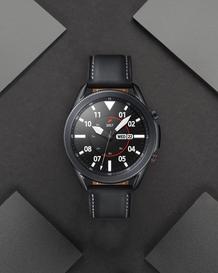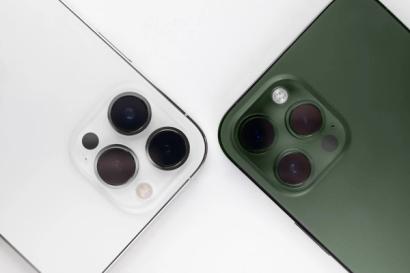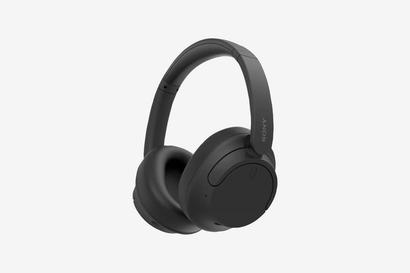

EDT vs EDP: Which Version Smells Better and Lasts Longer?
EDT vs EDP comes down to how you wish to be remembered. An EDT offers lightness and ease while an EDP brings depth and a slower, more deliberate presence.
- Words: Gentleman's Journal
There are few topics in men’s grooming that inspire as much spirited conversation as the difference between Eau de Toilette and Eau de Parfum, particularly among men who treat their colognes like cherished heirlooms. You can see it unfolding in any fragrance boutique on a Saturday afternoon: two impeccably dressed men, one holding a small glass bottle like a rare artefact, the other gesturing in the air with a testing strip as if he’s mid-opera. They exchange grave observations about longevity, compare sillage like military strategy, and debate the meaning of "depth" as though preparing for a parliamentary inquiry.
Yet beneath the theatrics lies a genuinely interesting question, one that matters more than most men realise. Because the version of a fragrance you choose is just as revealing as the fragrance itself. An EDT and an EDP may share a name, share a bottle, even share most of their ingredients, but they rarely share a personality. They behave differently. They wear differently. They make you feel different.
So which one smells better? Which lasts longer? And which deserves to live on your dressing table in 2026?
Let us approach the matter with a clear head, an educated nose, and the calm authority of a man who has survived the cosmetic hall at Selfridges.
A Tale of Two Strengths
To begin, one must understand that the difference between an EDT and an EDP has very little to do with marketing theatre and very much to do with concentration. The industry will tell you that an EDT contains somewhere between 5% and 12% aromatic compounds, while an EDP carries a higher concentration, often between 12% and 20%. This is true, technically. But it is also delightfully unhelpful.
The real difference is philosophical.
An Eau de Toilette, in its purest form, is built to be bright, airy, and effervescent. It is the version of a fragrance that greets the world with fresh top notes, lifting quickly off the skin like the first sip of something cold and citrusy. Its charm is immediate. Its personality is upfront, often revealed in the very first spray. You notice it instantly, and so, usually, does everyone else.
An Eau de Parfum, by contrast, concerns itself with depth, richness, and narrative. It leans into the mid- and base-notes of a composition: the spices, woods, resins, and musks that develop slowly and linger long after the first impression has passed. An EDP doesn’t rise sharply off the skin; it unfurls. It moves with intention. It has presence rather than projection.
In other words: if an EDT is the lively opening scene of a film, an EDP is the slow-burning third act. Both are compelling, but in very different ways.
The Question of Longevity
Of all the distinctions between the two strengths, longevity is the easiest to quantify. One does not need a trained nose or poetic sensibility to understand which version will stick around. The answer is clear: an EDP lasts longer.
With its higher concentration of fragrance oils, an Eau de Parfum settles onto the skin with greater tenacity. It anchors itself through woods, balsams, and musks, notes that cling warmly and develop over time. On most men, a well-composed EDP will be perceptible for eight hours or more, often carrying its final whispers into the following morning. It is the olfactory equivalent of a conversation that lingers pleasantly in memory.
An Eau de Toilette, lovely though it is, tends to flit in and out like a charming guest with another party to attend. It arrives with a burst of brightness, dances around for a few hours, and then quietly excuses itself. Four to six hours is typical. Sometimes less, especially in heat, where lighter notes evaporate faster than the wearer’s patience.
This, however, does not make the EDT inferior. It simply makes it different, more agile, more seasonal, more polite in certain circumstances. There are days when longevity is a gift. And days when longevity is a threat.
Scent Profile: Two Interpretations of the Same Idea
Where the debate becomes truly interesting is in the question of which smells better. For even when a fragrance carries the same name, the EDT and EDP versions are rarely identical twins. They are more like siblings raised in different households.
The EDT is often built to showcase the top notes: citrus, herbs, aromatics, crisp peppers, mint, aldehydes, the bright and immediate pleasures. It is a composition designed for energy. It lifts upward off the pulse points, interacting freely with the air around you. For many men, the EDT embodies the purest expression of a fragrance: its architecture visible in silhouette, its structure clean and uncluttered.
The EDP, however, is the fragrance reinterpreted for depth. Even in the same bottle design, the same name, the formula has clearly been rewritten. The perfumer emphasises the heart, florals, spices, nuanced aromatics, and then deepens the base with smoother woods, amber, or musk. The result is often fuller-bodied, rounder, and more sensual. In many cases, the EDP feels like the grown-up version, the one with secrets and shadows.
Which smells better depends entirely on the wearer’s preference. Some men crave the quicksilver brightness of an EDT, especially in spring and summer, while others prefer the enveloping warmth of an EDP. And many discerning gentlemen keep both, switching not just by season but by intention: the EDT for days of clarity, the EDP for nights of purpose.
How They Behave in the Real World
Fragrance is not worn in a vacuum. It is worn in offices, in taxis, in overheated restaurants, in cold theatres, in bars with questionable ventilation, in bedrooms with flattering lighting, and in the unpredictable climate of British weather.
In the real world, an EDT can feel spirited and breezy, the ideal companion to a crisp white shirt, a midday meeting, a café terrace, or a glass of something pale and mineral. It is social without being imposing. A well-judged EDT suggests good grooming and a certain effortless charm. It allows space for other scents: clean laundry, sun-warmed skin, the faint aroma of freshly brewed coffee. It never competes; it converses.
An EDP behaves differently. It paints with thicker strokes. In cold air, it becomes a private pleasure, one that warms on the skin like cashmere. In dim lighting, it becomes quietly magnetic, the sort of scent that invites someone to lean closer without knowing why. In the right setting, it can be devastatingly effective.
But in summer heat or confined spaces? An enthusiastic EDP can feel like a velvet curtain in the wrong season. One must possess judgment, and ideally, restraint.
Seasonality: Why the Weather Chooses for You
Men often underestimate how dramatically temperature affects fragrance. Heat amplifies scent. Cold mutes it. Humidity transforms it. What feels subtle in February can feel aggressive in August. And what feels rich in November can feel disappointingly thin in March.
This is why EDTs thrive in warm weather: their lightness is a design feature, not a flaw. Citrus oils bloom beautifully in sunlight. Aromatic herbs stay crisp. Aquatic and mineral notes shimmer. An EDT in summer behaves like linen: breathable, elegant, perfectly suited.
Conversely, an EDP in winter becomes the olfactory equivalent of a well-made overcoat, structured, weighty, protective. Woods, ambers, spices, and musks adore cold air. They cling warmly to wool scarves. They unfold slowly in low temperatures. They become atmospheric.
A man who owns both strengths often finds the seasons choose for him, like some refined and benevolent dictator. This is not a burden. This is a good strategy.
Identity: What Your Choice Says About You
Whether one likes it or not, fragrance sends a message about personality. The choice between EDT and EDP is almost embarrassingly revealing.
The man who favours EDTs tends to enjoy clarity and ease. His scent is often understated and impeccably fresh, the finishing touch rather than the centrepiece. He moves lightly through the world, values efficiency, and understands that good taste seldom requires volume. His fragrance is chosen not to impress but to affirm.
The man who gravitates toward EDPs, however, has a deeper appreciation for atmosphere. He values texture, warmth, and mood. He wears scent not as an accessory but as a statement, discreet perhaps, but intentional. He understands the romance of slow development and the sophistication of a composition that evolves throughout the evening. He enjoys the private pleasure of a fragrance that only reveals itself to those who get close enough to deserve it.
Neither approach is superior. Both are valid expressions of taste. What matters is alignment, the cohesion between a man and the air he chooses to occupy.
Where Most Men Go Wrong
It must be said: fragrance snobbery has confused a great many otherwise sensible men. There is a peculiar idea that the strongest version of a fragrance is automatically the best. This is nonsense, the grooming equivalent of believing that the biggest engine makes the best car.
Strength is not a quality. Longevity is not sophistication. Projection is not charming.
Some EDTs are modern masterpieces. Some EDPs are clumsy and oversweet. And some fragrances, famously even, smell better in their EDT form, where the lighter composition gives them shape and lift.
What matters is not concentration, but composition. An EDT and an EDP are two interpretations of the same theme. You choose the one that resonates with you.
So Which Version Should the Modern Gentleman Buy?
If one were forced to answer the question directly, as if hauled before a tribunal of perfumers, the simplest truth is this: the man who wants versatility, freshness, and ease will be happiest with the EDT; the man who wants depth, character, longevity, and sensuality will gravitate to the EDP.
But the more refined answer is this: a gentleman with a discerning nose will own both. Not because he is indecisive, but because he understands nuance. He keeps the EDT for daytime clarity, warm weather, and polished casualness, the everyday elegance of smelling clean and effortlessly composed. He reserves the EDP for evenings, cool air, serious tailoring, intimate conversations, and situations where atmosphere is as important as appearance.
The best wardrobes contain both linen and cashmere. The best fragrance wardrobes contain both EDTs and EDPs.
The Final Word
Fragrance, at its best, is not about strength or projection or how many hours it clings to your collar. It is about identity, the quiet, invisible expression of who you are and how you choose to be remembered. An EDT and an EDP are two approaches to that expression: one bright and open, the other deep and enduring.
Which one smells better? The one that suits you.
Which one lasts longer? The one built for staying power.
Which one should you wear? The one that matches your intention for the moment.
A gentleman does not choose his fragrance by concentration alone. He chooses it the way he chooses everything: deliberately, thoughtfully, and with just enough personality to make it unforgettable.


